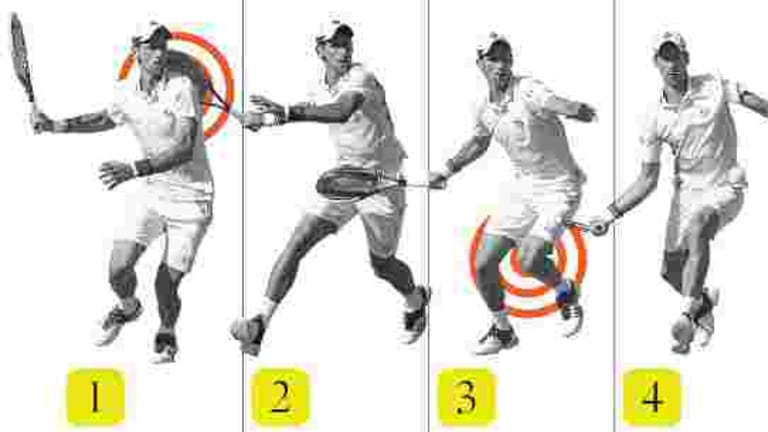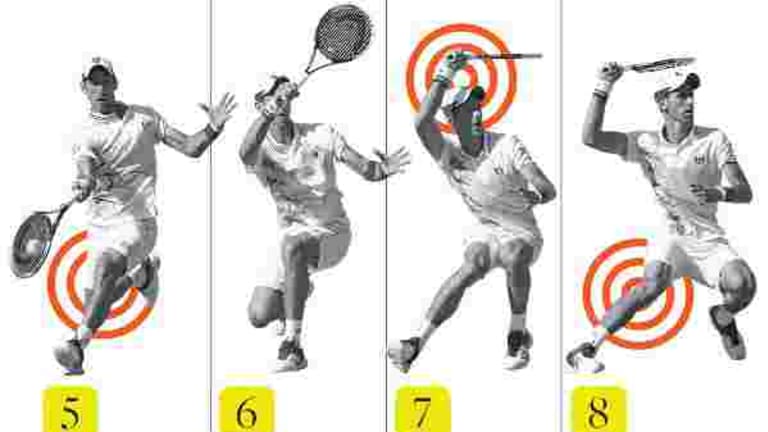1. Looking over his left shoulder, Djokovic takes his racquet back high behind him to prepare to hit.
Djokovic has a long distance to run for this shot, so he has to act fast. Once he picks up the direction of the incoming ball, he immediately turns his body and tracks the ball by looking over his left shoulder. His feet are turned in the direction he has to run; his head is pointed toward the ball. Djokovic takes his racquet head back high behind him to prepare for a whipping swing. He uses a semi-Western grip.
2. Maintaining good posture, he coils to prepare the power in his swing.
You’ve probably been told to move with small steps in tennis. Small steps are ideal when you’re close to the ball, but when you have a lot of ground to cover, you have to run all-out and still maintain great posture, as Djokovic does. He’s still looking over his shoulder at the ball, and notice that he has turned his shoulders even more, to the point where you can now glimpse his back. This coiling is the key to both racquet-head speed and control.
3. Djokovic drops the head of the racquet and bends his knees lower to absorb the impact of his running strides.
Djokovic starts to drop the head of his racquet as the whip of his swing begins. We’re used to seeing modern players hit from open stances and lift off the ground as they swing. It’s a different story on the run. Here, Djokovic uses a closed stance—he doesn’t have time for anything else—and his knees are bending lower as he swings so he can absorb the impact of running. He’s channeling all that speed and movement into his swing.
4. He bends even lower as he opens up his shoulders and begins to accelerate his racquet.
As he begins to accelerate the racquet forward, Djokovic bends still lower. His legs have moved violently to this point, but his upper body has remained calm throughout the swing. His shoulders begin to open up as he uncoils into the shot and the butt cap of his racquet points at the incoming ball.

